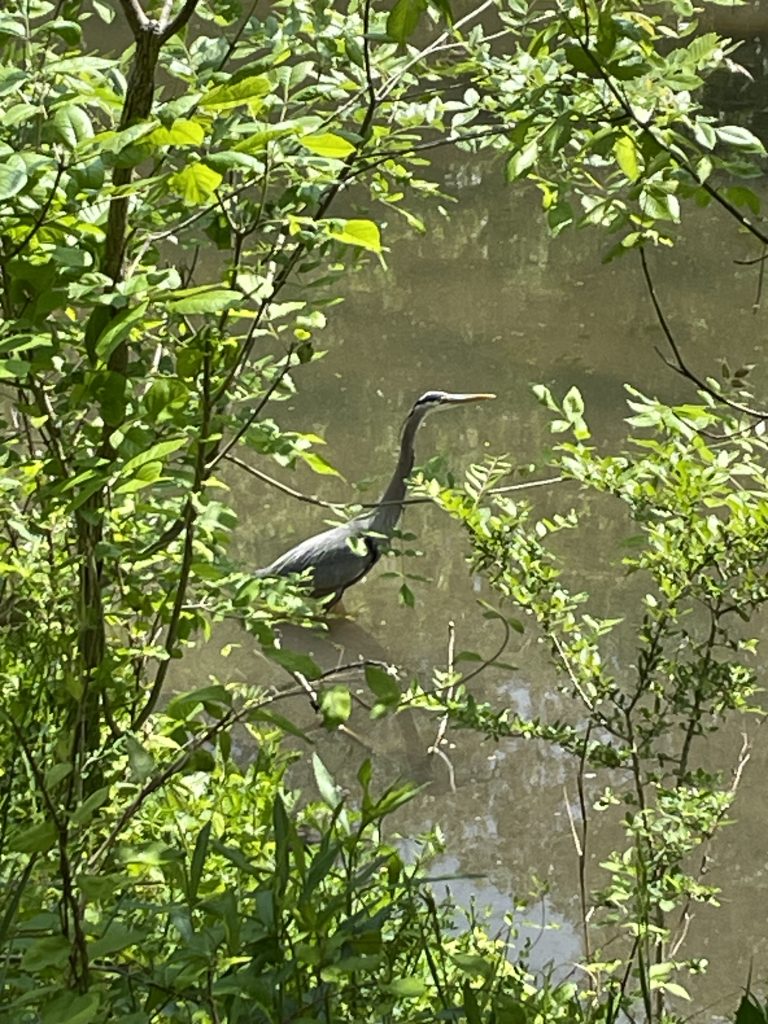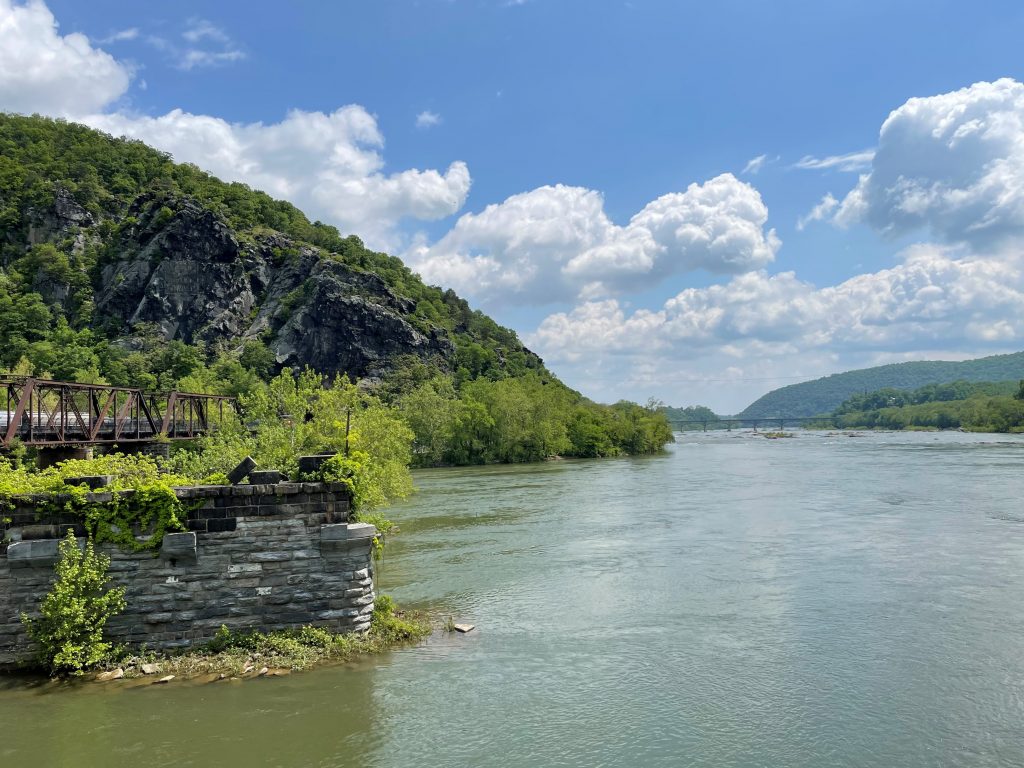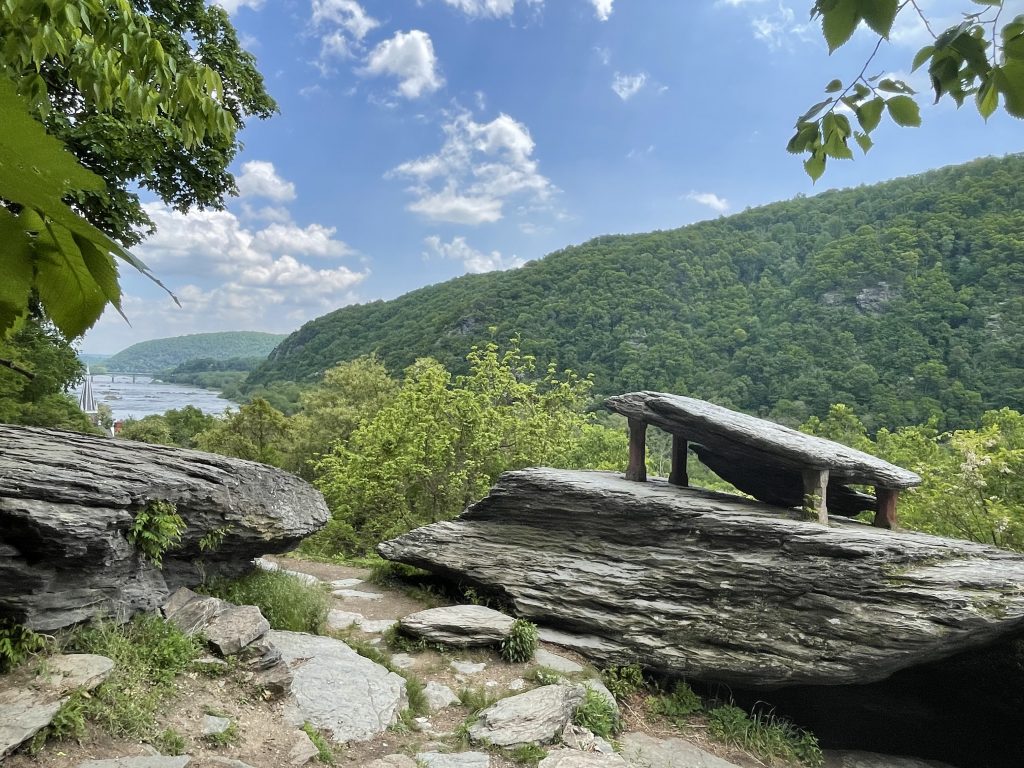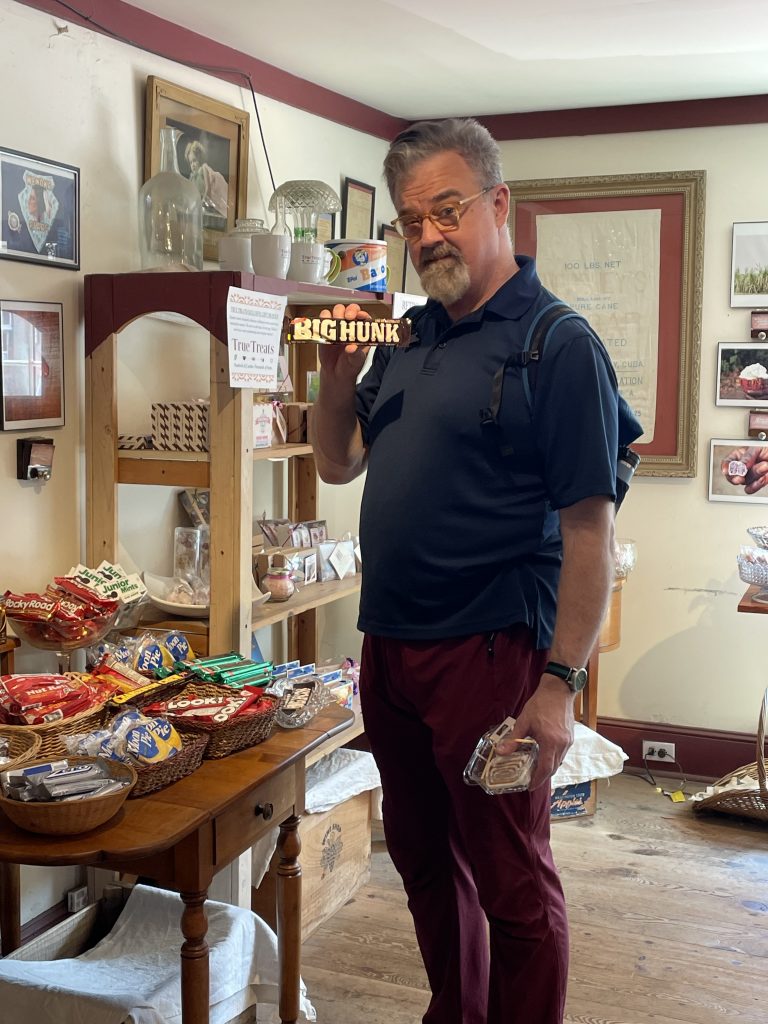Harpers Ferry National Historic Park is a site that is rich in history. The town itself has lots of little village shops that you can see in any number of historical reenactment parks –- a “dry goods store”, a confectionery, a “boarding house”. Sites related to John Brown’s 1859 revolt include the location of the Arsenal (which no longer stands but is marked by a sign), and John Brown’s Fort (a small stone building with two small empty rooms, pictured above). The museum devoted to John Brown includes a few artifacts and three movies related to Brown’s life (and death).
We opted to walk to Harpers Ferry proper from the Visitors Center (downhill), where we were rewarded with lots of turtles and a great blue heron in the canal along the way. We strolled “Main Street”, looked inside the John Brown Fort, walked over to the river viewpoint, meandered the John Brown Museum, and that was the extent of our historical investigations. Oh, we did go into True Treats Historic Candy, which, as the name implies, is a purveyor of historic candy, where we purchased some rather pricey Potato Candy and Turkish Delight.
Next, we walked to check out the ruins of St. John’s Episcopal Church, and then undertook a very short hike on the Appalachian Trail to see Jefferson Rock and the views over the Shenandoah and Potomac Rivers. Since we’re not crazy, we then caught the return shuttle back up hill to the Visitors Center.
I’d say the highlight was our visit later in the day to Harpers Ferry Brewing (which is not actually in West Virginia but in Virginia). This is where I tried pineapple on pizza for the first time, and did not find it completely disgusting.
So why is there a National Park here? On October 16, 1859, John Brown led 21 men in a raid on the armory, where he planned to use the weapons to start an anti-slavery revolt. Things did not go well, and the first victim was a free black man who was a baggage porter for the B&O Railroad, who was an innocent bystander. Things went downhill fast, and soon Brown and his followers were trapped in the fire engine house now know as John Brown’s Fort. Negotiations failed, ten followers were killed (including two of Brown’s sons), and Brown was hanged for his role just a few weeks later. Quoting from the History Channel here, “Although the raid failed, it inflamed sectional tensions and raised the stakes for the 1860 presidential election. Brown’s raid helped make any further accommodation between North and South nearly impossible and thus became an important impetus of the Civil War.”
The odd part of all this to me is that Harpers Ferry was also significant during the Civil War due to its strategic position at the mouth of two major rivers. The town changed hands a whopping eight times between 1861 and 1865, but we saw almost no mention of these. (There is a Civil War Museum, but it was closed for repairs, and I still feel like I should have been able to learn something about this while we were there). I saw a placard outside the visitors center quoting a telegraph message from Major General John G. Wool to Colonel Dixon S. Miles in 1862: “Do all you can to annoy the rebels should they advance on you…You will not abandon Harpers Ferry without defending it the last extremity.” Wow! The town’s location was natural choice on the route for a northward invasion, and in fact General Robert E. Lee took that route in both his 1862 Maryland campaign and his 1863 Gettysburg campaign. The town suffered major damage during the Civil War with all these goings-on — but I only learned all this by researching the town after our visit.
Hey, at least we added a new state to our Van Life trip – #8, West Virginia.




Supposedly Thomas Jefferson stood at this rock on October 25, 1783 and admired the view greatly.
He published Notes on the State of Virginia in 1785, and wrote of this spot, which you can read here.


bacon for Doug on top.





